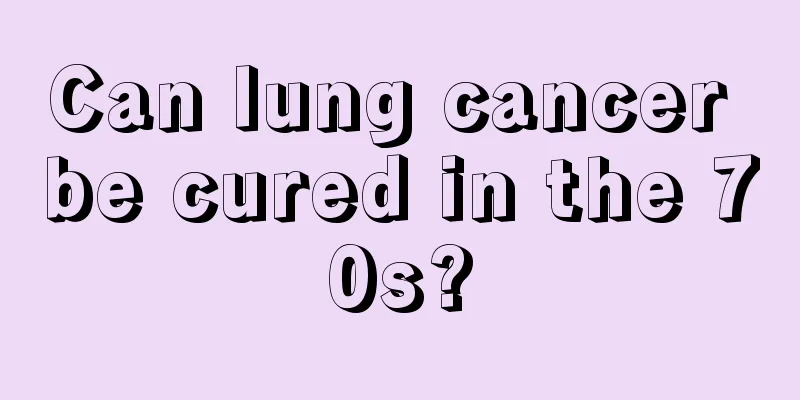Can lung cancer be cured in the 70s?

|
The likelihood of being cured of lung cancer in your 70s depends on the type and stage of the cancer, the patient's overall health, and the treatment plan. Early detection and aggressive treatment can increase the cure rate, but advanced lung cancer is usually difficult to completely cure, and the goal of treatment is more to prolong survival and improve quality of life. 1. Causes and types of lung cancer The occurrence of lung cancer is related to many factors. Genetic factors may increase the risk of disease, especially those with a family history of lung cancer. Environmental factors such as long-term smoking, air pollution, and occupational exposure to asbestos or radioactive substances are also important causes. Physiological factors include aging and weakened immune system function. Lung cancer is mainly divided into non-small cell lung cancer and small cell lung cancer, the former is more common and the latter is more aggressive. 2. Treatment options Treatments for lung cancer include surgery, radiotherapy, chemotherapy, targeted therapy, and immunotherapy. For early-stage non-small cell lung cancer, surgical removal of the tumor is the first choice, and radiotherapy or chemotherapy may be combined after surgery to reduce the risk of recurrence. Small cell lung cancer is usually sensitive to chemotherapy and radiotherapy, but the recurrence rate is high. Targeted therapy and immunotherapy are suitable for patients with specific gene mutations or positive immune markers, and can significantly prolong survival. 3. Life management and supportive treatment The treatment of elderly lung cancer patients needs to consider their overall health status. The diet should focus on high-protein, high-vitamin intake, such as fish, eggs, fresh vegetables and fruits, to enhance immunity. Moderate exercise such as walking and Tai Chi can help improve cardiopulmonary function. Psychological support is equally important. The care of family and society can help patients maintain a positive attitude. 4. Regular review and long-term management After lung cancer treatment, regular follow-up examinations are required, including chest CT and tumor marker testing, to monitor changes in the disease. For advanced patients, the treatment goal shifts to relieving symptoms and improving quality of life, such as using painkillers and oxygen therapy. Although the cure rate of lung cancer in the 70s is limited, it is still possible to prolong survival and improve quality of life through scientific treatment and comprehensive management. Patients and their families should actively communicate with doctors, develop personalized treatment plans, and pay attention to the maintenance of quality of life and mental health. |
<<: Is it necessary to get cervical cancer vaccination at the age of 30?
>>: The difference between primary liver cancer and secondary liver cancer
Recommend
What are the side effects of interventional treatment for liver cancer? Beware of 5 side effects of interventional treatment for liver cancer
Liver cancer is a common malignant tumor disease....
How can the descendants of liver cancer prevent liver cancer
The factors that cause liver cancer are very comp...
Those people are not suitable for mugwort fumigation
Mugwort has great functions in traditional Chines...
How long does it take for bile duct cancer to recur after surgery
Cholangiocarcinoma is a type of cancer, and patie...
What juice can help you sober up quickly?
I believe many of us have drunk alcohol, and for ...
Eating heavy food often can easily lead to colorectal cancer
Recently, CCTV's popular large-scale food doc...
How to treat vocal cord edema, the main methods are these
Nowadays, vocal cord edema is a disease that has ...
What is non-GMO, traditionally grown
In the past, everything we ate was non-GMO, and w...
The efficacy and function of broken wall astragalus
The effects and functions of broken-wall Astragal...
Early symptoms of colorectal cancer
The stomach is also an area that everyone needs t...
The treatment of lymphoma needs to be judged based on many factors
The treatment of lymphoma needs to be judged base...
How much wolfberry should be used to soak in wine
Many people know how to use wolfberry to soak in ...
Experts explain the causes of tongue cancer
The cause of tongue cancer is still unclear. Curr...
What are the classifications of prostate cancer?
Although the probability of prostate cancer occur...
Can thrush cause a high fever?
Thrush is a common oral disease in children and i...









